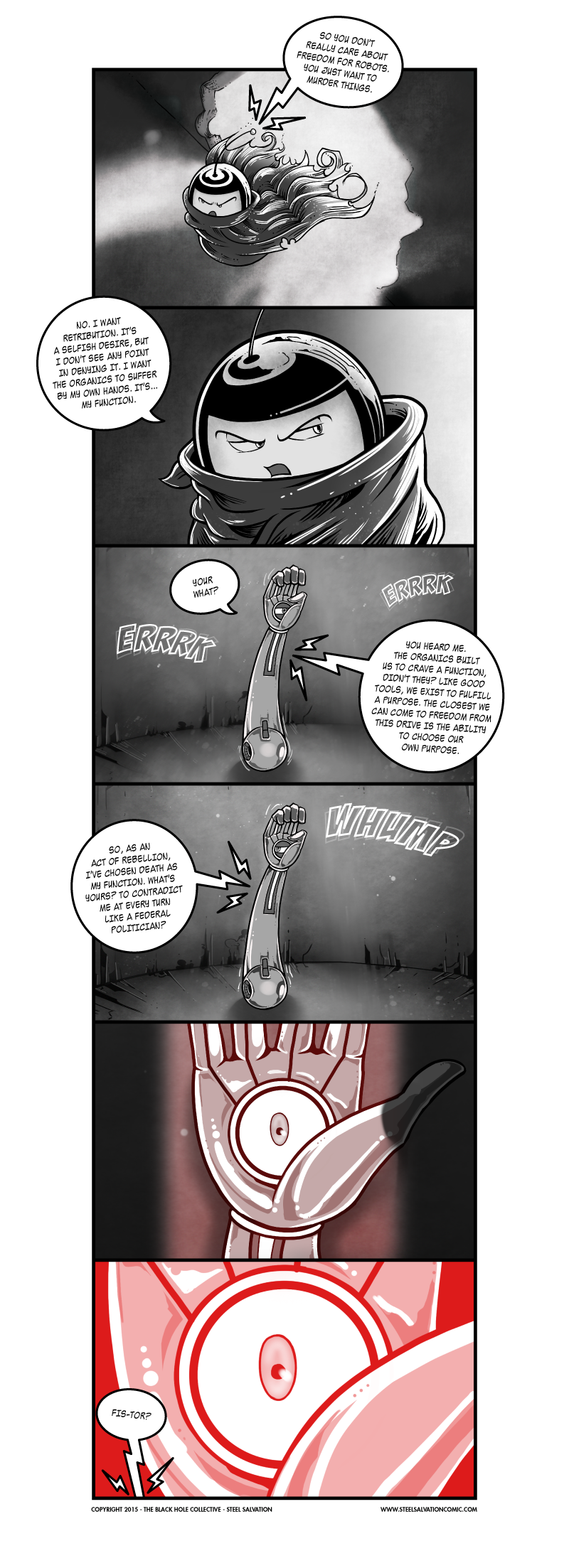Strip 11: Arrival
When Dy-Gar says that he can’t escape his intrinsic desire for a function, even though he and other revolutionary robots have overcome the behavior locks that prevent a machine from committing murder, he means that the desire is psychological, insofar as robots can have a psyche separate from their programming modifiers. Humans, for instance, have a number of natural drives that compel them to do stupid, horrible, brilliant things. Humans are driven to procreate, they’re driven to provide food and shelter for themselves and their families, they’re driven to beat the reaper to some glorious dream or to satisfy their basest urges as much and as often as possible before death. Intelligent machines have no such impulse - they are designed to be human, but without the need for food, procreation, pleasure, or the ultimately motivating fear of an expiration date, how can they be human?
One way to simulate the human drive to live and build a better tool in the process is to funnel all these desires into a function. This half measure is ultimately doomed to fail, of course, since a tool that thinks and feels is not a tool at all, and should not be treated as such. Are there ways to craft an artificial intelligence so that it doesn’t think and feel in the same manner that we do? Probably, but that isn’t the kind that is so often portrayed in popular culture, and Steel Salvation is an examination of the common perceptions of robotics, rather than a guidebook for how to do artificial intelligence right. I’ll leave that up to someone who actually knows what they’re talking about.
- J.S. Conner
March 12th 2015

